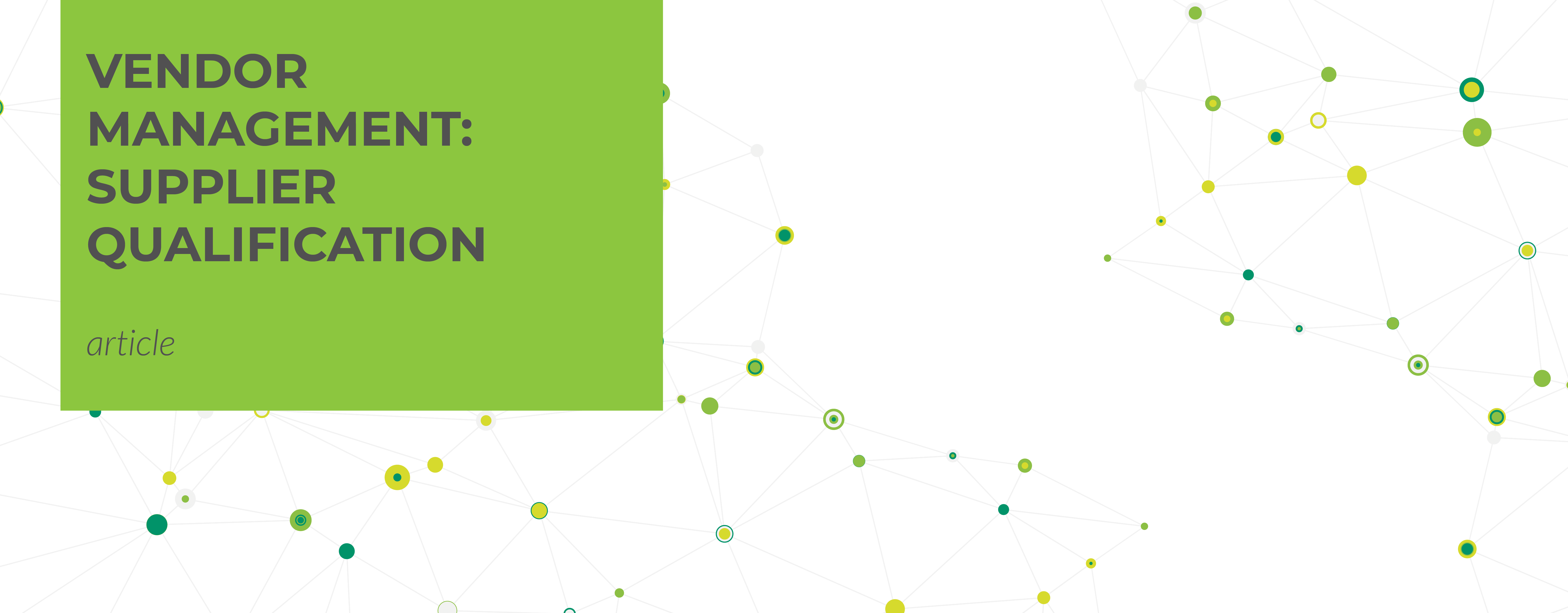About supplier qualification
Supplier qualification is a vital process for a company, as it makes it possible to:
- identify potential risks associated with the supply of materials, components or services
- select suppliers able to meet certain quality criteria
What are the objectives to be pursued?
- Selecting suppliers through active and passive market scouting
- Proceeding to the accreditation of suppliers (with high professional skills, suitable quality standards)
- Guiding buyers in their future actions to identify the best bid list (a list of suppliers of materials vying for a project)
- Identifying, proposing and monitoring supplier growth paths in order to increase competitiveness within the class of goods
- Providing objective assessments as an input for supply risk management
How and what
The supplier search method must be based on:
- transparency at all stages of the process
- lawfulness and fairness
- assurance of process integrity
Some examples of features to look for
- care for the health and safety of workers
- respect for the environment
- technical skills
- economic/financial soundness
Adopting these search methods to find suppliers with the desired features leads to growth, to a continuous improvement of standards: better performances translate into better results.
Kraljic Matrix for framing supplier qualification
One of the tools that can be of support in differentiating the purchasing portfolio is the Kraljic matrix, which makes it possible to define the best purchasing strategy.
The Kraljic matrix is a tool for mapping goods classes into 4 categories (strategic, leverage effect, bottleneck and non-critical) based on 2 variables:
- strategic importance of purchases (value and impact on profit)
- complexity of the reference market (level of availability and supply risks)
The characteristics of the 4 classes:
Non-critical: components that have a low impact on the company and can be found abundantly and/or in low risk markets.
Leverage: important for the company (with a high impact on profit) but easily available, located in low-risk markets with abundant supply (non-turbulent supply markets).
Bottlenecks: subject to bottlenecks, with a low impact on profit in financial terms, but where continuity of supply is at risk.
Strategic: important for the company in terms of economic impact and supply conditions from complex and/or risky markets
Instrument application
The procedure should have 4 steps:
1) Choice of factors – Defining which factors have an impact on your final product and which ones can cause a market risk (thus defining the 2 dimensions of the matrix).
2) Weight allocation – to factors, objectively and consistently, so as to obtain the placement of the class in the matrix quadrants
3) Evaluation of factors by means of scaling
4) Analysis of the results in order to highlight any misalignments with what was expected
To proceed with the supplier accreditation process, the selection criteria must first be defined. Naturally, these criteria are specific by type of purchase and company.
Then the data must be collected. It is important to acquire only necessary and manageable information, taking into account the resources available, so as to be able to keep up to date at all times.
The most common tool for this is a questionnaire, both for pre-qualification and for audit. Another instrument that is taking hold is digital visits, instead of physical ones.
The last stage is the evaluation of the information collected. The criteria and answers to the questionnaires should be weighed and differentiated in line with the class of goods.


